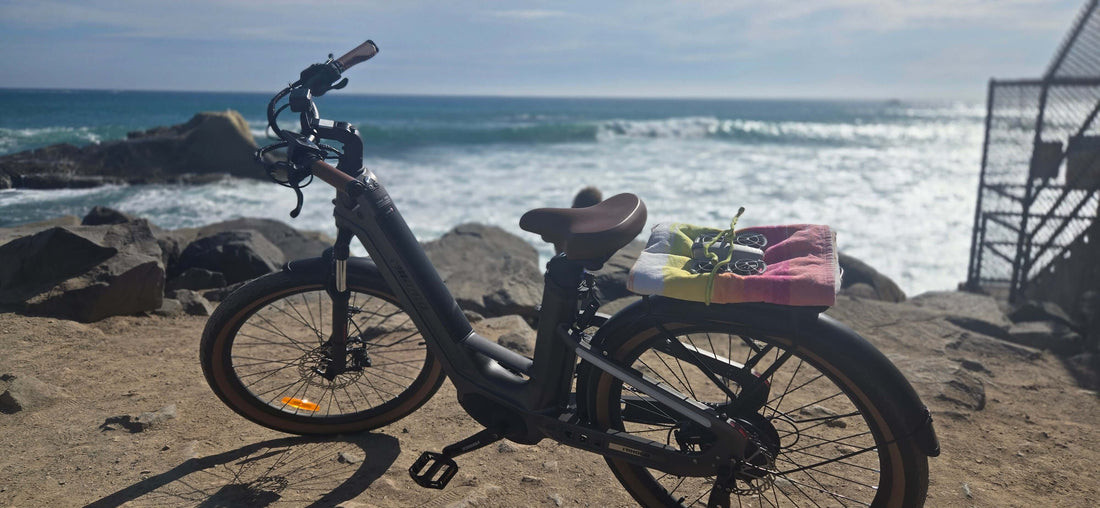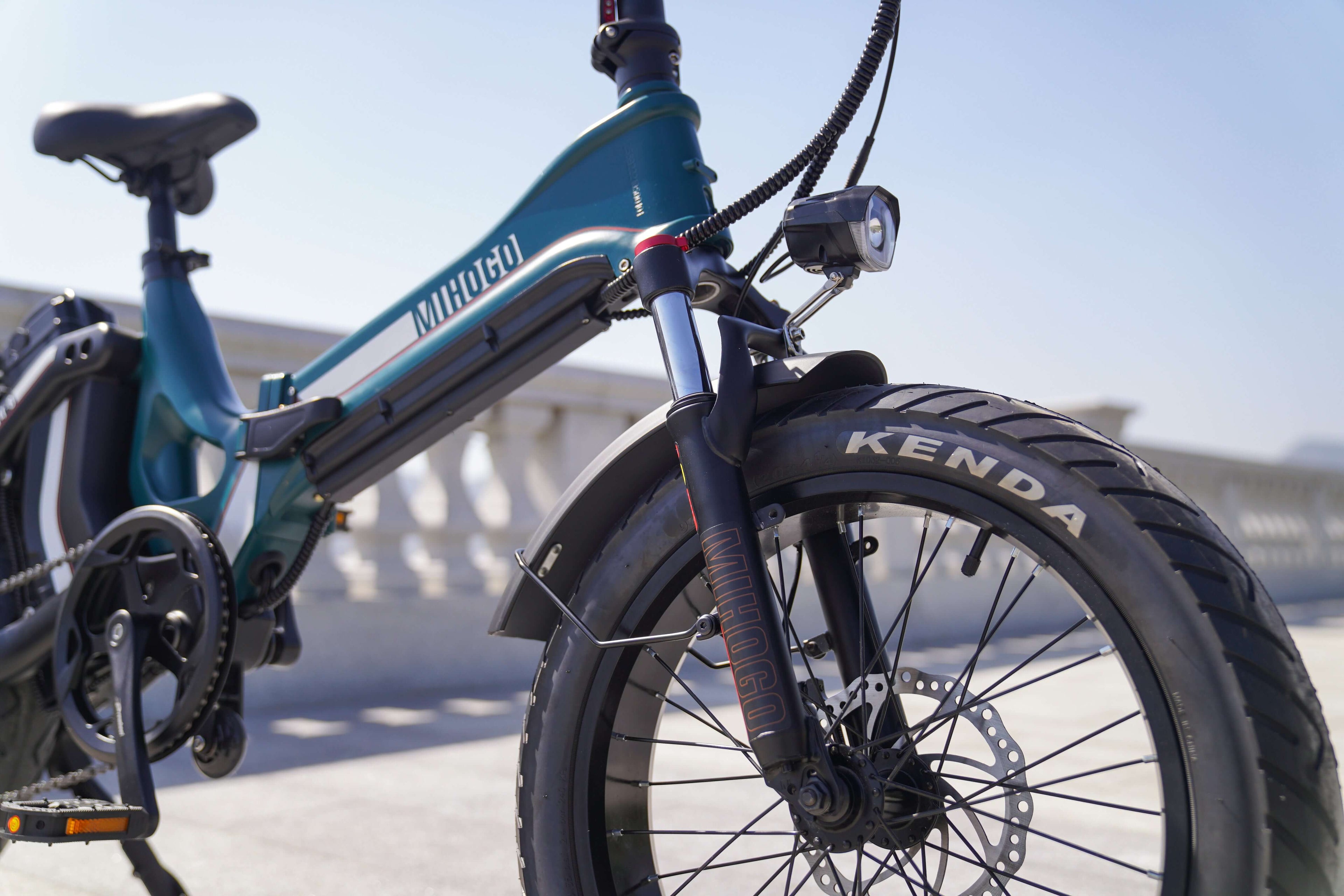Practical Benefits: Extending Your Two-Wheel Possibilities
Extended Commuting Distance: Go 2-3x Farther
Traditional cycling limits most people to short distances, but electric bike commuting transforms this equation completely. With motor assistance, your effective commuting radius expands dramatically:
- Traditional bike range: 5-10km comfortable commuting distance
- Electric bike range: 15-30km with ease, up to 100km on a single charge
- Real-world impact: Access to jobs and services previously too far to cycle
This extended range means you can live further from city centers while maintaining an active commute, opening up more housing options and lifestyle choices.
Reduced Physical Strain: Arrive Fresh, Not Sweaty
One of the biggest barriers to bike commuting has always been arriving at work exhausted and perspiring. Electric bikes eliminate this concern:
- Pedal assistance: Motor support reduces physical effort by 50-70%
- Climate control: Maintain comfortable exertion levels regardless of weather
- Professional appearance: Arrive at meetings looking fresh and composed
- Consistent performance: No longer limited by daily energy levels or fitness fluctuations
Cargo Hauling Capability: Your Mobile Utility Vehicle
Modern electric bikes transform simple transportation into practical utility. They can easily handle:
- Grocery shopping: Carry 20-50kg of shopping without strain
- Child transportation: Safely transport one or two children in specialized seats
- Work equipment: Laptops, tools, samples – whatever your profession requires
- Weekend adventures: Camping gear, sports equipment, and recreational supplies
This cargo capacity makes electric bikes genuine car alternatives for many daily tasks.
Hill Climbing Confidence: Conquer Any Terrain
Hills and headwinds no longer dictate your cycling routes. Electric bike motors provide:
- Consistent power: Motor assistance maintains speed regardless of gradient
- Route flexibility: Take the most direct path, not just the flatest
- Confidence building: Tackle routes that previously seemed impossible
- Accessibility: Make cycling viable regardless of local topography
Health Benefits: Exercise That Fits Your Lifestyle
Exercise Maintenance: Real Fitness, Smart Assistance
Contrary to common misconceptions, electric bike health benefits are substantial and scientifically proven:
Studies show that e-biking can help manage healthy blood sugar levels, positively affect one's BMI, and provide "terrific low-impact exercise that's easy on your joints." The key is that motor assistance supplements rather than replaces pedaling.
Research findings:
- E-bike riders typically cycle 50% more often than traditional cyclists
- Cardiovascular benefits match those of conventional cycling
- Muscle strengthening occurs due to the bike's additional weight (helping with resistance training)
- Aerobic fitness improvements support longevity and overall health
Accessibility: Opening Cycling to Everyone
Electric bikes dramatically expand who can participate in cycling:
- Older adults: Maintain cycling well into later years despite reduced physical capacity
- Joint issues: Low-impact exercise suitable for arthritis and mobility concerns
- Recovering athletes: Gradual return to fitness with adjustable assistance levels
- Mixed fitness groups: Families and friends can ride together regardless of fitness disparities
Increased Frequency: The Motivation Factor
The convenience and reduced effort of electric bike commuting creates a positive feedback loop:
- Lower barriers: Weather, hills, and fatigue become manageable challenges
- Time efficiency: Faster than walking, often faster than driving in traffic
- Enjoyment factor: The fun element increases motivation to ride regularly
- Habit formation: Easier to maintain consistent exercise routines
For detailed information about cycling health benefits, visit the World Health Organization's physical activity guidelines to understand how regular cycling supports overall wellness.
Environmental Benefits: Your Personal Climate Action
Car Replacement: Measurable Environmental Impact
The environmental case for electric bikes is compelling and quantifiable:
According to a study by the European Cyclists' Federation, an e-bike can save up to 250 grams of CO2 per kilometer compared with a car. This means that if a person replaces a 10-kilometer car trip with an e-bike every day, they can save up to 912.5 kilograms of CO2 a year.
Annual impact per commuter:
- CO2 reduction: Equivalent to planting 45 trees annually
- Air quality improvement: Reduced particulate matter and NOx emissions
- Energy efficiency: 100x more efficient than cars per mile traveled
- Resource conservation: Significantly lower manufacturing footprint
Energy Efficiency: Remarkable Power Economics
Electric bikes represent one of the most energy-efficient motorized transport options:
- Energy consumption: 2-5 watt-hours per kilometer vs. cars using 15x more energy
- Electricity usage: €0.12 to fully charge a 500Wh battery
- Renewable integration: Easy to power entirely from solar/wind sources
- Grid impact: Minimal strain on electrical infrastructure
Reduced Traffic Congestion: Collective Benefits
Every electric bike on the road contributes to broader urban improvements:
- Space efficiency: One car parking space accommodates 6-10 bicycles
- Traffic flow: Reduced congestion benefits remaining car users
- Infrastructure optimization: Better utilization of existing road networks
- Urban livability: Quieter, cleaner, more walkable neighborhoods
The Economic Advantage: Smart Financial Choice
Total Cost of Ownership Comparison
When comparing electric bike vs car costs, the economics are striking:
Annual running costs:
- Electric bike: €200-600 (including electricity, maintenance, insurance)
- Car: €3,000-8,000 (fuel, insurance, maintenance, parking, registration)
- Annual savings: €2,400-7,400 by choosing an electric bike
Payback period: Most quality electric bikes pay for themselves within 6-18 months through transportation cost savings alone.
Hidden Car Costs Eliminated
Electric bike ownership eliminates numerous car-related expenses:
- Parking fees: Save €500-2,000 annually in urban areas
- Fuel price volatility: No exposure to petroleum price fluctuations
- Depreciation: Electric bikes hold value better than cars
- Registration and licensing: Minimal bureaucratic costs
Lifestyle Transformation: Beyond Transportation
Mental Health and Well-being
Electric bike commuting provides psychological benefits often overlooked:
- Stress reduction: Active commuting reduces cortisol levels
- Outdoor exposure: Regular fresh air and natural light
- Sense of accomplishment: Daily achievement through active transportation
- Community connection: Greater engagement with local neighborhoods
Time Efficiency in Urban Environments
In European cities, electric bikes often prove faster than cars:
- Traffic avoidance: Use bike lanes and paths unavailable to cars
- Parking immediacy: No time lost searching for parking spaces
- Route optimization: Direct routes unavailable to motor vehicles
- Predictable timing: Less subject to traffic variations
Social and Community Benefits
Electric bike adoption contributes to broader social improvements:
- Reduced inequality: Affordable transportation access for all income levels
- Community health: Cleaner air benefits everyone, especially children
- Local economics: More likely to shop locally when arriving by bike
- Urban vitality: Increased foot traffic supports local businesses
Choosing the Right Electric Bike for Your Needs
Key Considerations for European Commuters
When selecting from Mihogo's electric bike collection, consider:
Battery capacity: Match range to your typical journey distance plus 30% buffer Motor type: Mid-drive for hills and efficiency, hub motors for simplicity Frame style: Step-through for easy mounting, traditional for performance Weather protection: Fenders and lights for year-round European conditions
Integration with Public Transport
Electric bikes complement European public transport perfectly:
- First/last mile solutions: Bridge gaps between home/work and transit stations
- Folding options: Carry aboard trains and buses when needed
- Multimodal commuting: Combine cycling with rail for longer distances
- Flexible scheduling: Less dependent on transit timetables
The Future is Electric: Market Trends and Adoption
European Leadership in E-bike Adoption
Europe leads global electric bike adoption with compelling statistics:
- Market growth: 12.7% annual growth rate through 2032
- Government support: Up to €1,000 purchase incentives across EU countries
- Infrastructure investment: €3.2 billion in dedicated cycling infrastructure
- Modal shift: E-bikes expected to account for 50% of bicycle sales by 2030
Technology Advancement
Modern electric bikes incorporate cutting-edge features:
- Smart connectivity: GPS navigation, theft tracking, performance monitoring
- Battery technology: Longer range, faster charging, extended lifespan
- Motor efficiency: More natural pedal feel, improved energy management
- Integration features: Lights, locks, and cargo systems built-in
According to Wikipedia's analysis of sustainable transport, cycling represents one of the most sustainable forms of personal mobility, and electrification only enhances these benefits.
Making the Switch: Your Action Plan
Starting Your Electric Bike Journey
Getting started with electric bike commuting:
- Assess your needs: Calculate typical journey distances and terrain
- Test ride options: Experience different motor and battery configurations
- Plan your routes: Identify safe cycling paths and charging locations
- Consider accessories: Lights, locks, weather protection, cargo solutions
- Build gradually: Start with shorter trips and increase confidence over time
Integration with Current Lifestyle
Electric bikes adapt to your existing routine:
- Weather contingency: Keep car/transit options for severe weather days
- Gradual transition: Mix e-bike days with other transport initially
- Social coordination: Encourage friends and colleagues to join
- Maintenance planning: Establish relationship with local bike shop
The Broader Impact: Your Role in Urban Transformation
Individual Choice, Collective Impact
Every electric bike purchase contributes to:
- Market growth: Supporting continued innovation and price reductions
- Infrastructure development: Demonstrating demand for cycling facilities
- Cultural shift: Normalizing sustainable transportation choices
- Policy influence: Showing politicians that active transport matters
Leading by Example
Electric bike adoption creates ripple effects:
- Workplace influence: Colleagues observe benefits and consider switching
- Family impact: Children learn sustainable transportation habits
- Community demonstration: Visible proof that alternatives work
- Environmental legacy: Tangible contribution to climate goals






